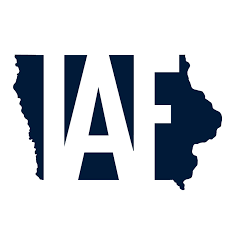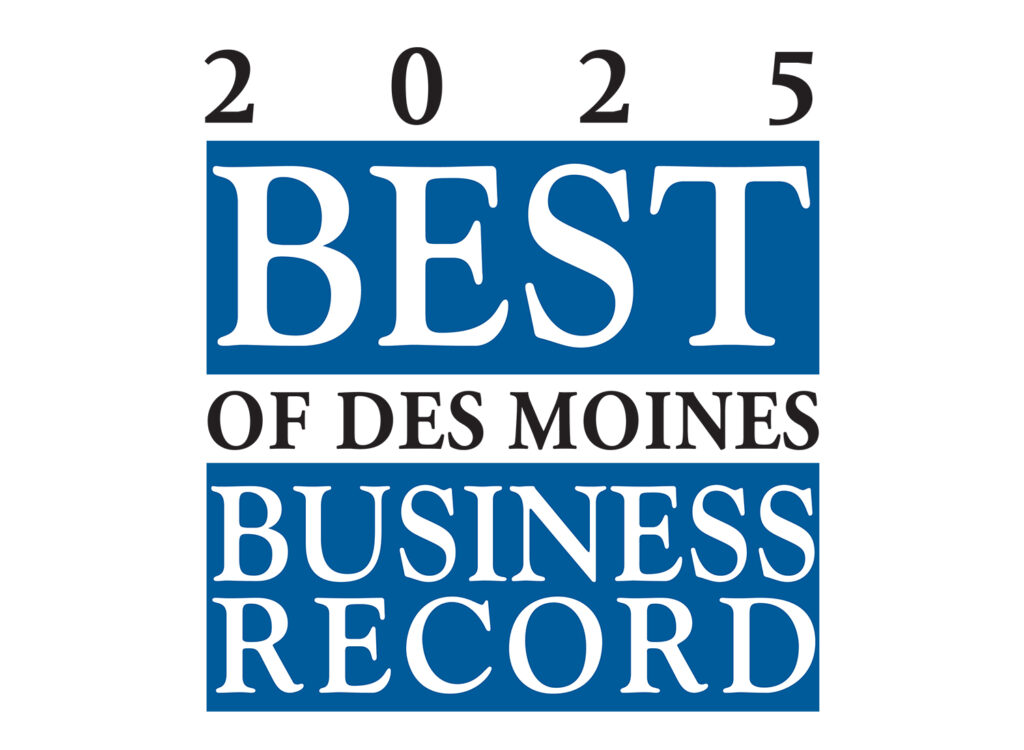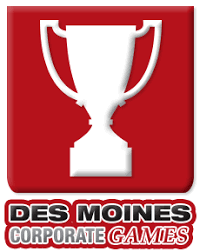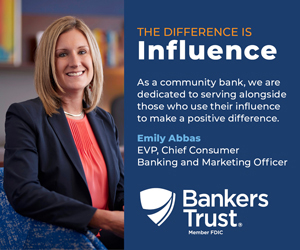Guest commentary: What we’re learning from using design thinking

BPC Staff Apr 28, 2021 | 7:18 pm
10 min read time
2,498 wordsArts and Culture, Business Record InsiderIntroduction By Amy Jennings, executive director, Greater Des Moines Leadership Institute
The Greater Des Moines Leadership Institute’s Community Leadership Program has been educating our community’s caretakers and change-makers for almost 40 years. For most of those years, classes worked on projects that contributed to the betterment of a nonprofit organization or local issue. The meaningful results achieved were due to the hard work, talent and networks of the class members. But were class members really learning new skills that would help them solve complex problems in the community? Ultimately, the answer was maybe. But maybe wasn’t enough for an organization that prides itself on offering transformational leadership experiences.
Enter design thinking. Design thinking is a problem-solving framework that facilitates innovation by keeping humans at the center. The five nonlinear phases of design thinking are empathize, define, ideate, prototype and test. The first three phases involved the class project teams using experiences shared by living experts and stakeholders to inform the direction of their possible solutions. They then developed prototypes to test with those individuals, using input to refine, or sometimes reimagine, their possible solutions.
The problem the teams used design thinking to address was increasing the number of Black people who own homes in Greater Des Moines. This issue was identified by experts in various organizations that are connected to Capital Crossroads, which is a foundational component of the program curriculum. While contributing real solutions to this community issue is a result of the process, the primary goal is that community leadership program graduates will have a new set of skills that they can use to solve issues in the community organizations for which they work and volunteer.
Class members will present their prototypes and share more about the design thinking process at their commencement event from 3 to 5:30 p.m. on May 12 at the Iowa State Fairgrounds. You can register at
gdmli.com/events.
Editor’s note: A few members of this year’s leadership program wrote about what it’s been like using the design thinking method. Here’s what they had to say.
By Patty Sneddon-Kisting, executive director, Urbandale Food Pantry
Heading into the design thinking phase of the Greater Des Moines Leadership Institute’s Community Leadership Program, I had a very rudimentary understanding of the method. My experience was limited to the broad overview of each phase, but never applying them or working through the actual process. I think one of the great things about the design thinking technique is that each component forces you – in a different way – to step outside your comfort zone of thinking and encourages you to be creative in problem-solving a solution. The empathy interviewing forces you to look at your preconceived notions of what you think the result should be and to take on the perspective of the target audience and end users. How is what you are creating going to impact their lives? Empathy interviewing encourages you to take different approaches on how we can foster organic conversations and not guide the end users and stakeholders to the outcome we think it should go toward, but really home in on their real-life experience. For example, with our class focusing on homeownership, the preconceived notion is that everyone wants to own a home, when the reality is that this may not be a priority for everyone. Empathy interviewing makes you challenge the process.
The creativity of design thinking really comes to life in the ideate and prototype phases. These phases empower you to think big and broad with a concept that no idea is wrong, every idea is unique, and components of different ideas can come together to potentially form a solution. These are the phases that I thought would be the hardest for me, but ended up being a lot of fun to really think outside of the box on solutions. Our entire class was given the exact same problem statement, and all five teams came up with vastly different ideas on how to address the issue. Finally, the testing phase was the most interesting phase regarding the wide variety of feedback that you will get on your prototype, and sometimes contradictory to other feedback that you were given. You are constantly testing to make sure there are no holes or gaps in your framework and then recreating based on that feedback. Testing is really a very detailed step-by-step process of how the end users get from point A to point B.
One of the biggest takeaways for me was that the design thinking method is not a linear process, and many times you will find yourself revisiting many of the steps over and over until you have a solution that best fits the issue you are working with, keeping in mind that what works for one may not work for another. I think all of this can apply in many avenues of our lives. There is not a one-size-fits-all leadership style, and often we have to be creative and think outside the box to form solutions.
By Armel Traore dit Nignan, senior manager, real estate analytics, Principal Financial Group
I am a father, a husband and a proud immigrant from Burkina Faso who has been fortunate enough to be accepted in the 2021 class from the Greater Des Moines Leadership Institute’s Community Leadership Program. Professionally, I lead the analytics efforts of Principal Real Estate Investors, by influencing enterprise-wide adoption of data science, and guiding cross-functional teams to deliver compelling solutions for our clients.
Coming into the program, I was passionate about the drastic pace of change born from automation, job displacement and increased globalization especially as it relates to BIPOC in the Greater Des Moines metro. I knew that we tend to be overrepresented in occupations likely to face net losses in jobs and sought to increase civic engagement in those communities as we are all our best advocates. I knew the community leadership program would provide a great opportunity to learn and make an impact. Despite the pandemic and social unrest following George Floyd’s murder, Amy Jennings, Kelly Royal and the class organizers did not disappoint. I grew as a person and a leader, learned a lot more about our community, felt better equipped to foster divergent thinking, and found meaningful relationships with my classmates.
Starting with the five practices of exemplary leadership model, my classmates and I had the opportunity to discover and put into practice leadership behaviors that are simple enough to remember and challenging enough that they will take a lifetime to master. As a leader, I tend to be action-oriented and while challenging the process has never really been an issue, it was clear that I had some opportunities to grow in other areas. Being aware of those opportunities to grow has helped me take appropriate action since both at work and in the community.
In a second phase of our leadership development, we had a chance to learn about opportunities and challenges facing the Greater Des Moines community through Capital Crossroads. My appreciation for Des Moines grew significantly with every landmark we visited and every speaker we had an opportunity to engage. We had some uncomfortable conversations, and our class grew closer as a result. Perhaps the most encouraging learning for me personally during this phase was to see how many folks are working relentlessly to serve the needs of folks within our community.
The most anticipated phase of the program was to learn which project we would work on. Our topic for this year: increasing homeownership among Black people in the DSM metro. Based on the One Economy report, we knew that nearly 70% of Black people rent their homes, in comparison to 33% of the general population. To potentially close that gap, we were to use design thinking, a creative problem-solving process that is iterative by nature and human-centric. Upon getting our project, the most challenging part was to trust the process and not jump to conclusions. A reminder that our mentors and program director emphasized. The design thinking stage that resonated most with me was empathy, in which we were forced to seek to understand. Through a series of interviews with various stakeholders, we learned a great deal about various agencies and programs operating in the homeownership space. It is the interviews with the end users, however, that provided us the most value and led us to the prototype we developed … for now. Design thinking gave me a framework to always involve people most affected by a problem in finding a solution for that problem. What an inclusive process!
By Leah Lint, business consultant, Nationwide
Design thinking is a problem-solving methodology that puts humans at the center. It is a process that provides a path to better uncover root causes, question assumptions and create innovative solutions to solve human needs in ways we may not have otherwise imagined. Empathy is the first, and most important, step in design thinking. In the empathy phase, problem-solvers connect with stakeholders and individuals who are directly impacted by an issue by conducting empathy interviews and observations. The goal is to gain a deeper understanding of the user’s needs, emotions and behaviors so that the problem-solvers truly understand who they are designing for, why a solution is important and what type of impact will be made. A successful empathy interview requires active listening, genuinely feeling with your user, keen observation and putting your own biases aside. The learnings from this step are utilized throughout the remainder of the design thinking phases — define, ideate, prototype and test. Leading with empathy generates more complete ideas that better address the root cause of the issue. Empathy is the foundation for designing a desirable and viable solution.
One of the advantages of design thinking is that it is a framework that can be used by anyone. Going through the process has shown that everyone has the capacity to be creative and innovative. The community leadership program class of 2021 is a prime example. We are not a class of trained designers and innovators, but we have been using design thinking to examine how we might increase Black homeownership in the Greater Des Moines community. We know that the negative impacts of historical redlining are still being felt today. As a class, we felt passionately about taking on this issue. In the beginning, it was daunting and seemed impossible to solve such a large issue with so many interconnected factors. It was hard to know where to start, but the design thinking process helped us narrow our focus down to a few areas that truly mattered and would be impactful.
This has been an inspiring and rewarding experience. Our class is working in five small project groups, and each one has come up with a unique solution to increase homeownership rates among the Black community in the Greater Des Moines area. Each project group worked with different stakeholders and individuals, which led to tailored ideas from each group. Using design thinking, and being intentional about empathy, emphasized that there is not a one-size-fits-all solution and that it takes all of us working together and sharing ideas to solve these problems. I see so much passion among my fellow class members, mentors and alumni. It inspires me and gives me hope that the skills we are building and connections we are making will create meaningful change in Greater Des Moines now and into the future. Design thinking is not the only method for problem-solving, but it is one that emphasizes the value of designing for humans and has been a valuable tool to help explore the complex issue of housing and can be utilized in a number of capacities to address other issues in the community and the workplace.
by Joe Benesh, president and CEO, the Ingenuity Co.
Our community leadership program project is working to address gaps in attainable housing in our community. The process we are utilizing, based on design thinking, affords us the opportunity to develop a solution more dynamically and responsively. As someone who was trained as a designer and someone whose practice as a consultant is based on some of these same components, the process we utilized in our cohort underscored the importance of this framework in some significant ways.
First, systems design is complex, but it is dramatically easier to manage if you are working from a good set of data. Our interviews with those directly impacted – using empathy – availed us of some of the preconceptions and confirmation bias that existed not only in our initial approach, but developmentally with the starting point of our analysis. This allowed us to reframe our hypothesis and set us on a responsive course toward our solution.
The philosophy behind creating a prototype is core to understanding how fundamentally different this approach is compared against a more standard systems design. Failure learning, or the idea that you rapidly create and test ideas, making adjustments in short spurts responsive to the resistance felt in their execution to alleviate the barriers unearthed, is a cornerstone of design thinking. In the context of the community leadership program classwork, teammates create and collaborate, uncoupled from the typical “solution finding” of standard problem solving, in favor of “problem seeking,” a much more turbulent – but I would argue fruitful – collaboration technique.
As the teams learned and collaborated, the discussions and development of the ideas bloomed. Sketches, models, digital representations, mock-ups – all were used in place of what is typically done in a white paper description or tactical outline/strategy overlay.
Our community leadership program project underlines why design thinking is such a fundamental shift in the way that strategy can be viewed and how we look at ways to address very large and sometimes hard to define problems. A solution to the problem we were given can experience failure through many venues: 1) untested preconceptions, 2) lack of quality data from informed and relevant stakeholders, 3) limited options or underdeveloped solutions, 4) lack of understanding of the core needs of the target group, 5) incorrectly structured design brief or problem statement, and 6) wrong types of solution infrastructure.
The increments in the process we used for the community leadership program not only went point by point to address the six barriers to success listed above, but also built confidence in the solution that we have. We are able to go back and test our solution with those we gathered information from at the start, using empathy and a responsive method of creating relevant solutions.
As a team we were able to build on each of our strengths, anchored to a framework solidly pushing us toward closely examining and testing what we could offer back to stakeholders to help them address their needs. Not based on what we think – based on what they educated us on, and we used our various skills and abilities to synthesize into what we hope will be a useful tool.










